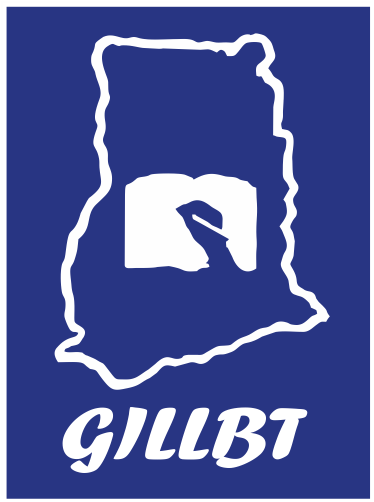OUR PROJECTS
LONG-TERM PROJECTS FOR A MORE BETTER WORLD
We work with local partners to come up with long-lasting, far-reaching solutions to spread the gospel.
Avatime
AVATIME
Name of Language- Avatime
Ethnologue Code: [avn]
Population: 24,000 (2003).
Alternative Name: Afatime, Sia, Sideme, Si-ya
Classification: Niger-Congo, Atlantic-Congo, Volta-Congo, Kwa
Dialects: None known. Reportedly similar to Nyangbo [nyb] and Tafi [tcd].
Location: Volta region: center at Amedzofe.
Avatime, also known as Afatime, Sideme, or Sia, is a Kwa language of the Avatime (self designation: Kedone (m.sg.)) people of eastern Ghana. The Avatime live primarily in the seven towns and villages of Amedzofe, Vane, Gbadzeme, Dzokpe, Biakpe, Dzogbefeme, and Fume.
GILLBT Contact Persons
1. Project Cordinators
Divine Mununkum Phone: 0243538317/0203467290
Email address: mununkum2020@yahoo.coma
2. Kwabina Adjei
3. Committee Chairperson
A brief history of the Avatime Literacy and Bible Translation Project
Before the 1980’s precisely, since 1973, Lynne Brydon, a British anthropologist stayed at Amedzofe and researched the history of the people of Avatime. She returned home to Britain, having learnt the Avatime language fluently, and urged the British SIL group to take up the translation of the New Testament in the Avatime language.
Dr. J. A. Ring of the Wycliffe Bible Translators, U.S.A conducted a language survey in 1987on behalf of the Ghana Institute of Linguistics Literacy and Bible Translation (GILLBT). The survey covered the language cluster of the central Volta Region consisting of Avatime, Logba, Tafi and Nyagbo traditional areas. Their Ewe comprehension was high above 85% according to the survey. Ten years later, Ring revisited these communities and discovered that their understanding of the Ewe language had dropped considerably.
Anufo
ANUFO
Name of Language: Anufor
Ethnologue Code:[cko]
Population: 66,000 in Ghana (2003). Population total all countries: 151,900
Alternative Names: Chakosi, Chokosi, Kyokosi, Tchokossi, Tiokossi
Classification: : Niger-Congo, Atlantic-Congo, Volta-Congo, Kwa, Nyo, Potou-Tano, Tano, Central, Bia, Northern
Location: North East Region: Wawjayga area
Scriptures Published;
New Testament- 2006
Old Testament- Ongoing
GILLBT Contact Persons
1. Project Cordinator:
Rev. James Azumah
Phone: 0245833696/ 0273565687
Email Address: azumahpastor@yahoo.com
Anufo Language Project
An Opportunity to Make an Impact for the Gospel
The Anufo people live in the Chereponi District, an area of approximately 1,110 square kilometres in the north-eastern corner of Northern Region. There are 181 villages with an estimated population of 65,000 in Ghana, 55,000 in Togo, and 12,000 in Benin.
The Anufo people, who are also known as Chakosi, Chokosi and Tchokossi, are mainly subsistence farmers and traders; a few are government workers. The illiteracy rate is at approximately 80%.
Islam is the dominant religion, practised by about 60% of the population, then African Traditional Religion by about 35%, and Christianity by 5%.
History
The development of the Anufo language was begun in the 1960s by a missionary with the Evangelical Presbyterian Church. In 1981, GILLBT started language development. In 1983 a committee was formed to oversee development of the language.
Ahanta
AHANTA
Name of Language: Ahanta
Ethnologue Code: [aha]
Population: 142,000 (2003).
Alternative Names:
Classification: Niger-Congo, Atlantic-Congo, Volta-Congo, Kwa, Nyo, Potou-Tano, Tano, Central, Bia, Southern
Location: Western region: Takoradi to Princes Town. Southwest coast
Scriptures Published
New Testament- 2009
Old Testament Ongoing
GILLBT Contact Persons:
1. Project Coordinator- David Kwofie
Phone: 0207598992
Email address: bura1945@yahoo.com
2. Mathar Emina
Phone: 0207166986
email address:
3. Committee Chairperson-
Nana Agyeman 1X
Phone: 0271105265
Bringing the Scriptures to Life in Ahanta
Bringing the Scriptures to life in a language that has never expressed the Scriptures before is an exciting and multifaceted mission. This is the mission of the Ahanta language project team. The team is seeking to realize their vision—God’s Word reaching into Ahanta hearts and lives—through a variety of creative strategies. Their varied approach is effectively preparing the hearts of the Ahanta people for the Word of God. As the team translates the New Testament, they are also laying the groundwork for its use through literacy, Scripture use training, and radio broadcasts of the translated Scriptures.
Translation is at the heart of the Ahanta team’s mission. Translation of the Scriptures is their first priority. The team participates in translation workshops to continue developing their skills and growing in their understanding of the Scriptures. Meanwhile, the team has also translated pamphlets to generate interest in both literacy and the Gospel. Some of these pamphlets, with titles like Smoking or Health and Exclusive Breastfeeding, deal with issues of health that are important to the local population. Others, like The Birth of Christ, share the good news of Christ and build foundations of familiarity and understanding for the Scriptures being translated.
Share This Page:


